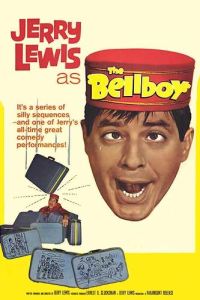(This film review of “Lion” appeared in the Australian Jewish News on January 26, 2017.)
Directed by Garth Davis; written by Luke Davies, based on the book “A Long Way Home” by Saroo Brierley; starring Sunny Pawar, Dev Patel, Rooney Mara, David Wenham, Nicole Kidman, Abhishek Bharate, Divian Ladwa, Priyanka Bose, Deepti Naval, Tannishtha Chatterjee and Nawazuddin Siddiqui
*****
When the history of Australian film of the early 21st century is written, “Lion” will take its place as one of the best of its era, a film both totally unique and fully realised. While its story of childhood loss, displacement, the search for identity and ultimate redemption is universal, it is also thoroughly Australian.
And it’s a true story. Saroo Brierley became separated from his family in India at the age of five and was adopted by an Australia couple who lived in Hobart. Some 25 years later, he discovered the potential of Google Earth; after months of searching satellite photos, he recognised his hometown, leading him to a reunion with his birth family.
The first half of “Lion” takes place in India, with young Sunny Pawar playing the role of Saroo, and Abhishek Bharate playing his older brother Guddu. One fateful day Guddu takes young Saroo on one of his many train expeditions in search of things to sell, and Saroo becomes too tired and is left to sleep at a train station. Upon waking up in the night, he searches for his brother and gets trapped in an empty train that travels for days – and almost 1500 kilometres – from Saroo’s home in regional Khandwa to Kolkata (Calcutta). For weeks, Saroo wanders the streets, unable to speak the local language (Bengali; his native tongue is Hindi) and avoids the fate of many homeless young people who are ruthlessly trafficked by unscrupulous adults. He winds up in an orphanage that is truly Dickensian, filled with screaming kids presided over by uncaring adults. Too young even to remember his last name, the attempts to find his mother and family fail.
The first hour of “Lion” is possibly one of the best cinema hours you will see this year: much of the time, the film proceeds wordlessly, mutely viewed from young Saroo’s standpoint. The media attention has focussed on the “name” stars – Dev Patel (“Slumdog Millionaire”), who plays the 30 year-old Saroo, and Nicole Kidman his adoptive mother Sue Brierley, both have Oscar nominations – along David Wenham as adoptive father John Brierley. But the emotional strength of “Lion” comes from the performance of Sunny Pawar as the young hero. Like the best of child actors, he brings a stillness and focus to the role that astonishes, illustrating just the ordeal that many young Australian migrants have experienced prior to their arrival here.
The second half of the film focuses on the emotional journey of Saroo (played by Patel), as he slowly works through his traumatic separation. Patel inhabits his character perfectly, with a great Australian accent and a cool swagger that only just hides the emotional insecurity he still feels at the early loss of his biological family. American actress Rooney Mara (“Carol”, “The Girl with the Dragon Tatoo”) plays Saroo’s girlfriend, and Divian Ladwa plays Mantosh Brierley, Saroo’s adoptive brother who suffers from psychological demons much greater than Saroo’s.
The second half of the film does not achieve the greatness of the first half, hampered by Saroo’s story that is so internalised that it is hard to show on screen. But the acting and the settings (Hobart and Melbourne) ground the film in the reality of the present day, setting up “Lion” for the emotional pay-off – yes, Saroo does find his family and learns new things about himself at the same time.
Great films are never the result of one person or one factor. So it is with “Lion”. It was not enough that it’s such an amazing “needle in a haystack” story: despite extensive publicity in 2014 given to the publication of Brierley’s memoir “A Long Way Home”, too few of us here in Australia were aware of it before this film. The film “clicks” because of so many interwoven parts. Director Garth Davis’ background in directing commercials brings a stunning visual style, one that brings the story to life in a way in unforgettable ways. Scriptwriter Luke Davis (deservedly Oscar-nominated) understands how to surmount life’s demons – he overcame heroin addiction and later turned it into a book and film (“Candy”) – and has fashioned Saroo’s biographical book into a screen story that rings true emotionally. And someone had to bring it all together, to see the screen potential in the story and to enlist those to make it: this was role of Sydney Jewish producer Emile Sherman (previous Oscar winner for “The Kings Speech”) and his partners Iain Canning and Angie Fielder.
There are only five to ten films truly worth viewing on the big screen each year. This year, “Lion” – also nominated for the Oscar “best film” category – is one of them.




 Posted by donperlgut
Posted by donperlgut 



 (photo above: David Gulpilil in
(photo above: David Gulpilil in 
